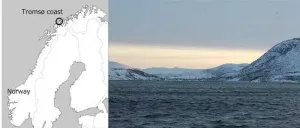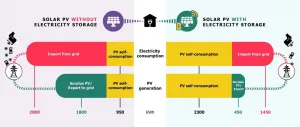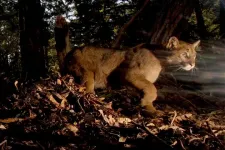The research group consisted of Assistant Professor Takashi Iwata of Kobe University's Graduate School of Maritime Sciences, Researcher Martin Biuw of the Norwegian Institute of Marine Research, Assistant Professor Kagari Aoki and Professor Katsufumi Sato of the Atmosphere and Ocean Research Institute, the University of Tokyo, and Professor Patrick Miller of the University of St. Andrews.
These research results were published online in Behavioural Processes on February 25, 2021.
Main Points
The researchers attached an omnidirectional (360°) camera to a humpback whale and discovered that these animals rest while drifting underwater. Whales can rest either on the surface or underwater, and it is believed that they choose which of these different environments to rest in depending on the situation. The omnidirectional camera recorded a wide range of information on the environment surrounding the tagged whale, revealing that humpback whales rest in groups rather than on their own. These results have demonstrated that animal-borne omnidirectional cameras are useful for learning more about animals that are difficult to observe. Research Background
It is difficult to observe the ecology of marine animals directly as they spend the majority of their lives underwater. However, studies on the ecology of difficult-to-observe marine animals have been recently conducted using a method called bio-logging. This method involves attaching a camera to an animal and recording environmental information related to their behavior and surroundings. Various kinds of data can be recorded and measured, and this information can be used to understand aspects such as animal behavior and diving physiology. Such data includes depth, swimming speed, acceleration (which can be used to understand the animal's posture and detailed movements), vocalizations, heart rate and GPS (Global Positioning System) location data.
Cameras in particular are a powerful tool as they enable researchers to view the individual animal's surroundings, which in turn helps them to understand the animal's behavior. However, the camera's limited field of view has been an issue with animal-borne cameras up until now. For example, research using a camera attached to a humpback whale (Megaptera novaeangliae) revealed that the whale would quickly move away from foraging sites if a competitor was present. However, the competitor was not visible due to the limited scope of the camera, therefore its presence was merely assumed. A camera with a wide-angle lens is therefore necessary to film the animal's entire surroundings.
This research focused on the humpback whale, a species of baleen whale that is found in oceans around the globe. Using bio-logging, researchers have learned more about humpback whales' foraging habits, however little is known about their resting behaviors. Foraging events can be identified from the recorded depth, swimming speed and acceleration (movement) of the whale that are characteristic signs that it is chasing prey. However, researchers have not identified the characteristic signs of resting, and it is not understood what the differences are between resting and swimming slowly. Information about an animal's resting behavior is necessary in order to understand their ecology. For example, if we consider animal behaviors in terms of their time budget, the percentage of time for other activities such as foraging decreases if their resting periods increase. Even though information about resting behaviors is essential for understanding animal ecology, hardly anything is known about baleen whales' resting habits.
This research group used an omnidirectional camera (with a 360° field-of-view on land and a 270° field-of-view underwater) and a behavioral data logger in order to illuminate the resting behavior of humpback whales.
Research Methodology and Findings
RICOH supplied the basic THETA camera module for this research, which was made pressure-resistant and waterproofed using epoxy glue by Little Leonardo Corp., leading to the development of a new type of animal-borne omnidirectional camera. A suction cup tag was made out of buoyant materials that could be attached to the whale. The tag contained an omnidirectional camera, a behavioral data logger and a radio transmitter.
The field study was conducted in January 2016, off the Tromsø coast in Norway (Figure 1). To tag the whale, the researchers approached it in a small vessel (5-6m) and used a 6m pole to attach the tag to the animal (Figure 2 and this Youtube video). The tag was designed so that it would fall off naturally after several hours and float up to the surface. The tag was then recovered by determining its location via the signal from the transmitter.
The research team were able to tag one individual, obtaining around one hour of video data and approximately eleven hours of behavioral data. From the behavioral data, the researchers discovered that the whale was inactive during the first half of the recorded period and demonstrated active behavior in the latter half (Figure 3).
Based on past research, it was assumed that this active movement in the latter half was foraging activity. The video data was captured during the first half of the behavioral data recording period when the whale did not move much. In this videoed period, the tagged whale's deepest dive was 11m on average and its average swimming speed (cruising speed) was 0.75m/s-1. It has been reported that humpback whales' regular swimming speed is 1.45m/s-1, however the tagged whale was moving much more slowly during this period. Whales usually move their flukes (tails) when they swim but there were no signs that the individual whale moved its fluke in the behavioral data recorded during the videoed period. In the footage, two other whales that are drifting underwater without moving their flukes are visible. It was determined that the tagged individual was also drifting underwater from its slow swimming speed, lack of fluke movement and the continued presence in the video footage of other individuals that were drifting. Seal species, sperm whales and loggerhead turtles are known to drift underwater while they are resting. Therefore, it is believed that the tagged humpback whale in this study was also resting. Previous research has reported that baleen whale species rest on the surface but this study has revealed that they also rest while drifting underwater. It is thought that whales consider factors such as marine conditions and their own physical condition when choosing from the two different resting environments: on the surface or underwater. In addition, the footage from the omnidirectional camera shows that whales rest underwater in a group rather than on their own.
Further Research
Researchers have been using animal-borne cameras as a tool to investigate the ecology of marine animals. For example, a backwards-facing camera attached to a mother seal recorded images of a pup swimming behind her. However, to ascertain the significance of these images (for example, whether or not the mother was teaching the pup how to hunt) it is necessary to use a camera with a wide field of view so that we can obtain knowledge about the surrounding environment. Still camera images of touching behaviors between whales have also been recorded; however, a wide-lens camera would aid researchers in determining the frequency at which this behavior occurs. These examples show how necessary wide-lens cameras, such as omnidirectional cameras, are for investigating the ecology of marine animals. Such cameras enable researchers to record the environment surrounding the tagged animal, enabling them to determine whether other individuals (such as competitors, collaborators, or predators) are present or not, and understand the frequency and distribution of food sources.
This research group inferred that the tagged whale was resting based on the captured footage of nearby individuals at rest, demonstrating the usefulness of omnidirectional cameras. It is hoped that these cameras can be utilized to illuminate the ecology of marine animals that are difficult to observe.
INFORMATION:
Acknowledgements
This research was supported by the following: the Bio-logging Science of the University of Tokyo (UTBLS) project, an overseas research fellowship from the Japan Society for the Promotion of Science (JSPS grant number JP17H00776), JSPS Bilateral Joint Research Program, the Mitsui and Co. Environment Fund (R16-0044), and The Research Grant against Global Warming of the Ichimura Foundation for New Technology. The omnidirectional camera was developed in collaboration with RICOH and Little Leonardo Corp.
Journal Information
Title:
"Using an omnidirectional video logger to observe the underwater life of marine animals: Humpback whale resting behaviour "
DOI:10.1016/j.beproc.2021.104369
Authors:
Takashi Iwata, Martin Biuw, Kagari Aoki, Patrick James O'Malley Miller, Katsufumi Sato
Journal:
Behavioural Processes (Volume 186- May 2021)








